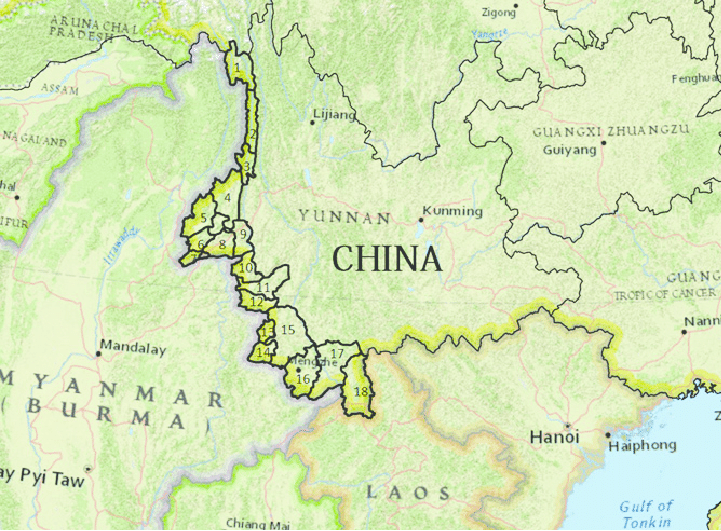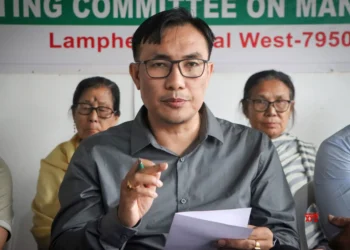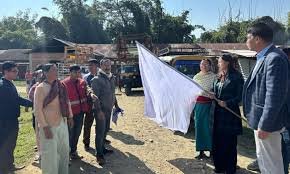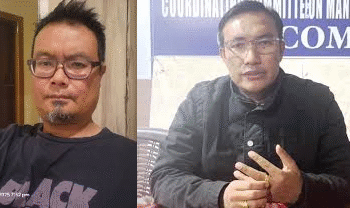China’s involvement in Myanmar’s peace process underscores its dual role as a mediator and regional power. By facilitating the MNDAA-Tatmadaw truce, Beijing seeks stability near its borders and protection for critical investments. Yet, the move highlights tensions with ASEAN’s peace-first approach.
BY PC Bureau
On Saturday, a ceasefire agreement was signed between the Myanmar military (known as the Tatmadaw) and the Myanmar National Democratic Alliance Army (MNDAA), marking a significant development in the long-standing conflicts that have plagued Myanmar. The talks, held in Kunming, China, were facilitated by Beijing, whose strategic interests in the region have made it a key player in Myanmar’s peace process. But does this ceasefire signal the beginning of sustained peace, or is it just a temporary lull in the broader civil war?
Background of the Conflict
Myanmar has been embroiled in ethnic conflicts since its independence in 1948, with numerous armed groups fighting for autonomy, ethnic rights, or control over resource-rich territories. The MNDAA, predominantly made up of ethnic Kokang Chinese, has been a significant player in the northern Shan State conflicts. Since its resurgence in 2009, the group has engaged in multiple clashes with the Tatmadaw, often spilling over into areas near China’s border.
#FMsays The #Myanmar government and the MNDAA held the 7th round of peace talks in Kunming, Yunnan province with China’s mediation in Mid January and signed an official ceasefire deal, FM spokeswoman Mao Ning said, adding that the de-escalation of tensions in northern Myanmar is… pic.twitter.com/Fd06D6akSQ
— China Daily (@ChinaDaily) January 20, 2025
China’s involvement in brokering this ceasefire reflects its concern over instability near its borders and its interest in protecting its investments in Myanmar, such as the China-Myanmar Economic Corridor.
Implications of the Ceasefire
While the agreement halts fighting between the MNDAA and the Tatmadaw, its broader impact remains uncertain due to the fragmented nature of Myanmar’s civil conflicts. Other significant rebel groups continue to operate, raising questions about the ceasefire’s ability to usher in long-term peace. These groups include:
- Arakan Army (AA) – Operating in Rakhine State, the AA is fighting for greater autonomy for the ethnic Rakhine people.
- Kachin Independence Army (KIA) – One of Myanmar’s largest armed groups, the KIA seeks autonomy for the Kachin people in the northern region.
- United Wa State Army (UWSA) – A heavily armed and influential group, the UWSA controls a semi-autonomous region along the China border.
- Ta’ang National Liberation Army (TNLA) – Representing the Ta’ang (Palaung) ethnic group, the TNLA is active in northern Shan State.
- Karen National Union (KNU) – One of the oldest insurgent groups, the KNU continues to advocate for self-determination for the Karen people.
- Karenni Army (KNPP) – Fighting for the rights of the Karenni people in Kayah State.
- Shan State Army-South (SSA-S) – Active in Shan State, this group seeks greater autonomy for the Shan people.
Challenges to Lasting Peace
The MNDAA-Tatmadaw ceasefire is a step forward, but several factors could hinder its effectiveness:
- Ongoing Clashes with Other Groups: The Tatmadaw is simultaneously engaged with multiple ethnic armed organizations (EAOs), making comprehensive peace elusive.
- Lack of Trust: Previous ceasefires have often collapsed due to mutual distrust and violations by both sides.
- Political Instability: Myanmar’s military coup in 2021 has further fragmented the nation, with the rise of the National Unity Government (NUG) and People’s Defense Forces (PDF) adding complexity to the conflict landscape.
- Regional Dynamics: While China has played a stabilizing role, its geopolitical interests might not align with fostering true peace. Other regional players like India and Thailand could also influence outcomes.
-
The regime in Naypyidaw and the Myanmar National Democratic Alliance Army (MNDAA) reached a formal ceasefire agreement on Saturday after the second round of China-brokered talks began in Kunming on Jan. 16 #WhatsHappeninglnMyanmar https://t.co/nhfHCQ94te
— DVB English News (@DVB_English) January 20, 2025
China’s Role in Myanmar’s Ceasefire: Peace Mediator or Strategic Stakeholder?
China’s facilitation of the ceasefire between Myanmar’s military and the MNDAA underscores its dual role as both a peace mediator and a strategic power in the region. While Beijing’s involvement may appear altruistic, its long-term interests, particularly regarding stability near its borders and economic investments in Myanmar, drive its actions.
China’s Interests in Myanmar
Myanmar’s Shan State and other northern regions, where conflicts like those involving the MNDAA occur, share a porous border with China. Spillovers from these conflicts, including refugees and cross-border clashes, pose a direct threat to Chinese security and stability in Yunnan Province. Additionally, Myanmar is integral to China’s economic ambitions. The China-Myanmar Economic Corridor (CMEC) is a flagship of China’s Belt and Road Initiative (BRI), linking Yunnan Province to Myanmar’s Kyaukphyu deep-sea port in Rakhine State. Instability disrupts the progress and operation of these projects. Myanmar also hosts vital oil and gas pipelines supplying energy to China, making stability near these routes critical. Strategically, China views Myanmar as a gateway to the Indian Ocean, offering leverage over trade routes. Supporting the Tatmadaw and facilitating ceasefires help cement its influence, especially as Western nations impose sanctions on Myanmar.
China’s Push for Early Elections
China has openly advocated for early elections in Myanmar, aligning with the Tatmadaw’s desire to legitimize its rule post-coup. This stance reflects Beijing’s pragmatic approach to the situation. Supporting elections allows China to work with a recognized government while sidelining opposition groups like the National Unity Government (NUG). Early elections could stabilize the political landscape enough to resume stalled economic projects, ensuring China’s investments are safeguarded. This approach also positions China as Myanmar’s key ally against Western sanctions and pressure, countering Western influence in the region.
ASEAN’s Contrasting Approach: Peace First
In contrast to China, ASEAN nations have focused on ending violence before discussing political solutions. The Five-Point Consensus, adopted in April 2021, prioritizes the immediate cessation of violence, dialogue among all parties, mediation facilitated by ASEAN, humanitarian assistance, and a visit by an ASEAN envoy to foster reconciliation. ASEAN’s insistence on peace first stems from its concern over regional stability. Continued violence in Myanmar exacerbates refugee crises and risks destabilizing neighboring countries like Thailand and Malaysia. As a bloc, ASEAN also seeks to maintain its relevance in regional conflict resolution, which necessitates tangible progress on peace.
The Divergence: China vs. ASEAN
The divergence in China and ASEAN’s approaches reflects deeper strategic differences. China’s pragmatic stance prioritizes stability for economic and geopolitical gains, while ASEAN’s principle-based approach emphasizes peace as a foundation for long-term regional harmony. China prefers bilateral dealings with the Tatmadaw to maximize its leverage, whereas ASEAN seeks an inclusive process involving all stakeholders, including the NUG and ethnic armed groups. By advocating for early elections, China indirectly legitimizes the military’s coup, a step ASEAN has been hesitant to endorse without meaningful progress on peace.
Risks of China’s Strategy
By advocating early elections without resolving ethnic and political grievances, China risks perpetuating instability. Its bilateral approach could marginalize ASEAN’s multilateral peace efforts, causing friction with regional neighbors. Overreliance on the Tatmadaw might backfire if the military fails to consolidate control or if anti-China sentiment rises among Myanmar’s opposition groups.
The Road Ahead: A Balancing Act
China’s role in Myanmar’s peace process will likely continue to be driven by its strategic interests, but achieving lasting peace requires a more balanced approach. Engaging with all stakeholders, including the NUG and ethnic armed groups, could enhance China’s credibility as a mediator. Aligning its efforts with ASEAN’s peace-first agenda could strengthen regional stability and prevent Myanmar’s crisis from becoming a broader geopolitical flashpoint. Beyond ceasefires, China must address the structural issues fueling Myanmar’s conflicts, such as ethnic grievances and demands for federalism.
What Lies Ahead?
The ceasefire between the MNDAA and the Tatmadaw is a testament to the potential of dialogue and external mediation in resolving Myanmar’s conflicts. However, without addressing the grievances of other ethnic groups and fostering an inclusive political framework, the truce may amount to little more than a localized pause in the broader civil war.
For a genuine peace process to emerge, the Tatmadaw must engage with all rebel factions and the broader opposition, including the NUG and PDFs, in a meaningful dialogue. Only then can Myanmar hope to transition from decades of conflict to a future of stability and development.













